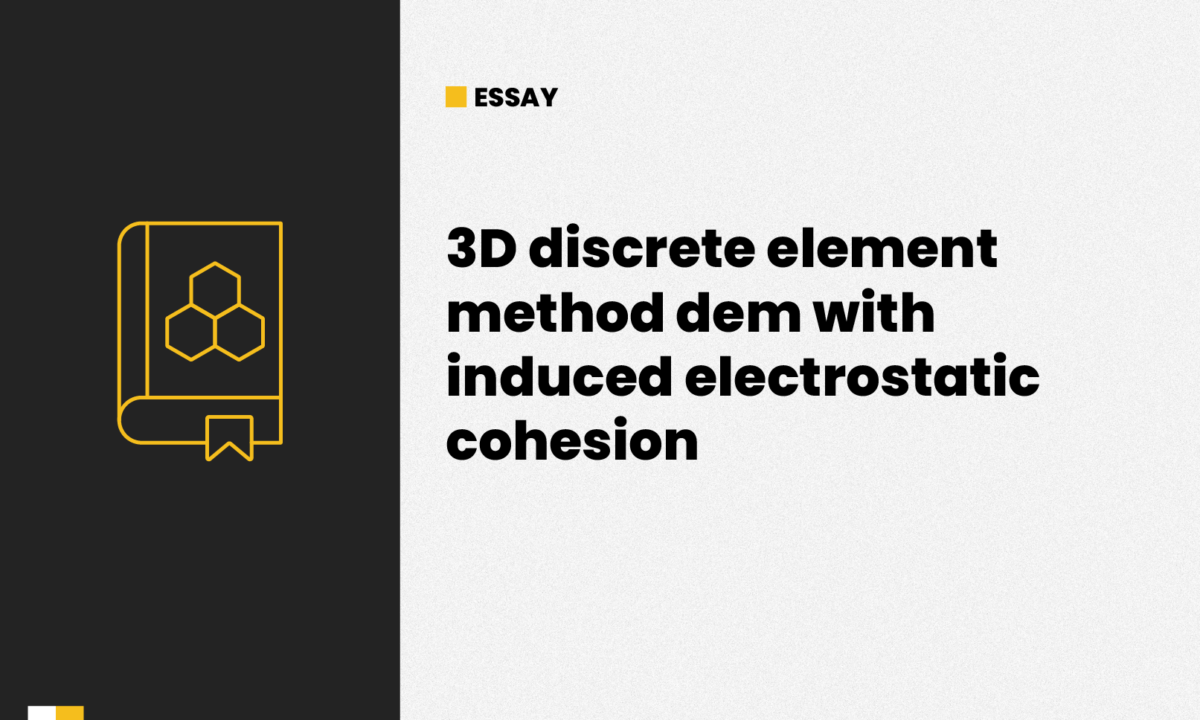
3D discrete element method dem with induced electrostatic cohesion
A generalized three-dimensional discrete element method with electrostatic induced cohesion
Introduction:
Granular materials can acquire electrostatic charges during collisions in various industrial processes. The present work is dedicated to the mechanical simulation of granular media using a method of discrete cohesive elements. It is a model based on packages composed of three-dimensional grains of arbitrary shape obtained from real samples by combining X-ray computerized tomography (3DXRCT) and mathematical functions called level sets. The electrostatic cohesion is introduced in the scale of the particles by incorporating an electric charge density on the surface of the grains. The effect of the introduction of electrostatic cohesion is visualized by the construction of Mohr circles in which an axial compression process is carried out on the packing, while the walls of this packing are kept at different confining pressures.
Features:
- A generalized model of discrete elements for three-dimensional grains.
- The model allows the determination of the electrostatic cohesion of real granular samples.
- The samples are composed of grains with arbitrary shapes and charge densities.
Benefits:
During the storage and transport processes in the granular material processing industry, the material undergoes various stages of deformation and stress. In many applications, knowing the cohesion of these materials is important to improve energy efficiency during the handling of granular flows. This work presents a way to model and measure this cohesion.
Execution time:
2 years.
Required equipment:
Cluster for high performance computing.
Amount:
$25000.
Probability of functionality:
95% (given the success of two-dimensional models, leaving some uncertainty when moving to a model with an additional dimension).
